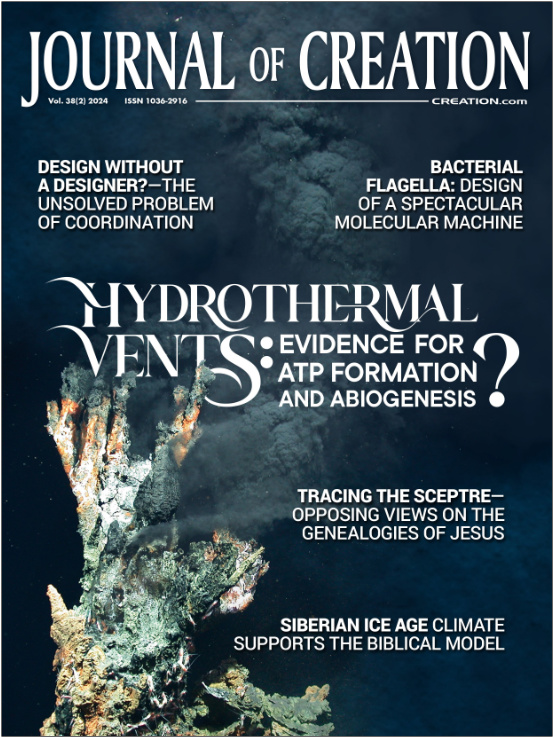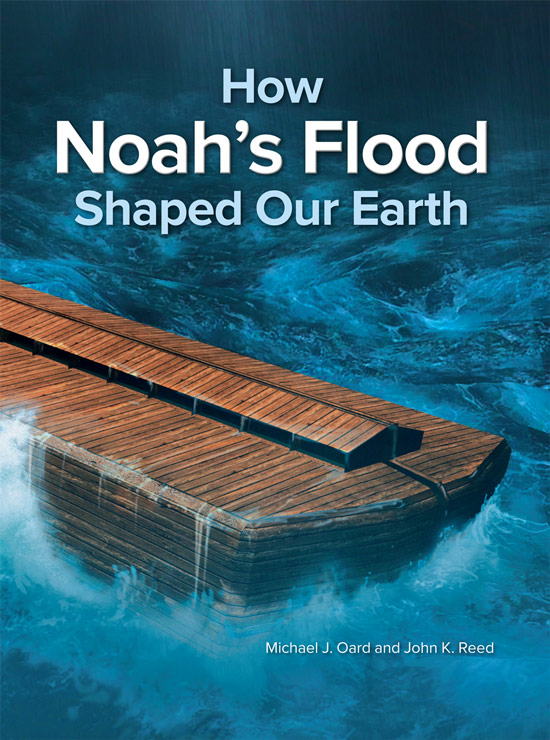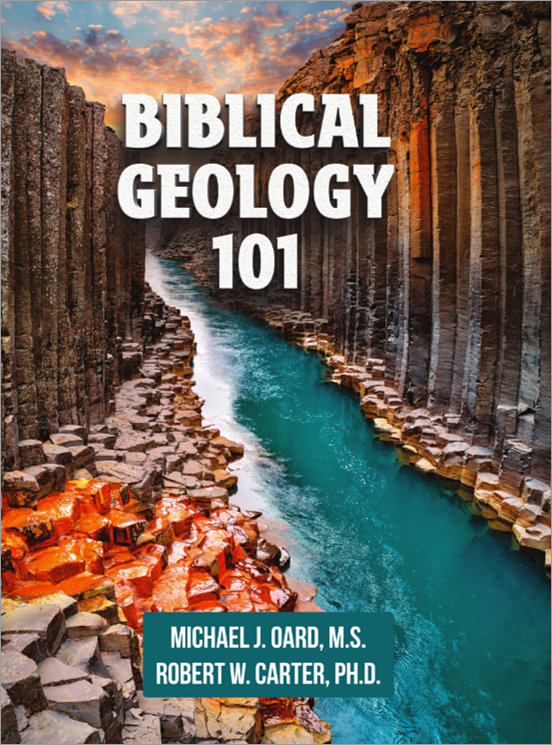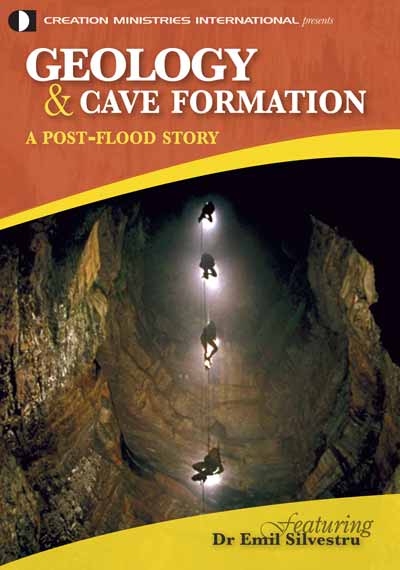Journal of Creation 38(2):16–17, August 2024
Browse our latest digital issue Subscribe
Have scientists solved the dolomite problem?
Dolomite, CaMg(CO3)2, is a major mineral in sedimentary rocks with some layers being over 1,000 m thick over areas of 500,000 km2.1 Its origin is a major mystery for uniformitarian earth science that has remained unsolved for over 200 years.2,3 Xu et al. claim, “Rarely is there a geological challenge that has endured as long a search for answers as the ‘dolomite problem’ has.”4 A similar difficulty exists with magnesite, MgCO3, which is frequently found in sedimentary rocks.4 So, it stands to reason that conventional scientists are working hard trying to solve it. Just recently, it was claimed that uniformitarian scientists have a solution.5 But before we can understand the solution, first we need to understand the dolomite problem.
The dolomite problem
The dolomite problem is the remarkable abundance of dolomite in ‘ancient’ sedimentary rocks, contrasted with its strange rarity in modern environments, despite conditions that favour its formation.6 Dolomite must have a stoichiometry of 50% magnesium and 50% calcium, but it can deviate a little from this ratio and still be called ‘dolomite’. Even more problematic, the crystal structure of dolomite is ordered. Ordered dolomite is a remarkable, special arrangement of alternating layers of calcium ions and magnesium ions separated by layers of carbonate ions (figure 1).7 This has a lower energy, thus greater stability. However, when crystallizing, the ions tend to find the first available vacancy at random. Thus, most attempts to make dolomite make a random arrangement instead. The right way is to use more intense conditions for longer times, so that there is enough energy and time to dislodge the randomly settled ions, and allow them to settle into the lower energy alternating state. Chemists call this kinetic vs thermodynamic reaction control, where the random arrangement is the kinetic product, while the alternating layers are the thermodynamic product.8 Dolomite does form today in hypersaline water bodies, especially by microorganisms that overcome the kinetic barriers.9,10
The current ocean is supersaturated in magnesium and calcium, but dolomite does not precipitate at ambient temperatures. One problem is that each magnesium ion is surrounded by six water molecules that need to be dislodged first. This is called the hydration barrier and is believed to be the critical kinetic inhibiting factor.11
However, there are other kinetic barriers,4 and Kim et al. think that growth inhibition is a stronger barrier.5 It has been discovered that certain catalysts, especially dissolved silica, can aid the formation of disordered ‘dolomite’ at room temperature.8 Disordered dolomite is also called Ca-Mg disordered dolomite. One recent discovery is that ethanol can be used to partially replace the water surrounding magnesium at low temperatures to overcome the hydration barrier.8 One main problem with the ethanol solution mechanism is that “high-ethanol-percentage solutions do not exist in natural environments.”12 The large-scale application of these catalysts is very unlikely, and the ‘dolomite’ is still unordered.
Abundant Precambrian dolomite likely primary
The abundance of dolomite has been variably estimated at 50% of all carbonate rocks4 to 30% of all carbonate rocks.5 Since carbonate rocks make up 20–25% of all sedimentary rocks,13 then dolomite would make up around 10%. Dolomite is most common in Precambrian sedimentary rocks, making up around 80% of the carbonate.14 It drops off sharply in the Phanerozoic. Moreover, it is likely that Precambrian dolomites are primary, i.e., they precipitated directly from solution.12 This clearly indicates that conditions were much different in the Precambrian than in the Phanerozoic.
The researchers also discovered that precipitated non-biogenic laminae can sometimes look like stromatolites:
“Precipitated stromatolites can form with or without the templating influence of microbial mats, and precipitated structures in Precambrian succession have provoked debate about biogenicity for decades.”15
Primary dolomite is formed at temperatures over 100°C.16 This is also why most conventional scientists believe that dolomite was formed by replacement, since they believe that the surface temperature has been about the same as today, when not glaciated.17 There is evidence for replacement, but its significance is limited, and it, too, requires hot temperatures.18
The new ‘solution’
The recent ‘solution’ to the dolomite problem claims that dolomite can form with innumerable cycles of supersaturation and undersaturation. Researchers suggest that if non-ordered dolomite (protodolomite) first forms, it becomes more ordered with geological time.19 They conclude this mainly because the older dolomite formations are ordered. The new solution claims that even in disordered dolomite, there are a few stable ordered regions. The disordered regions dissolve faster during undersaturation. Reprecipitation from a supersaturated solution again produces more disordered dolomite that has a little more local ordered regions. Thus, after countless dissolution/reprecipitation cycles, the order gradually increases.6
Problems with the new solutions
The ‘solution’ has numerous problems. First, it is a controlled lab experiment with the simulations starting on an ordered 3-micron dolomite seed crystal.6 Second, they varied the saturation state by a pulsed electron beam. When the beam was turned on, dissolution occurred. When it was turned off, supersaturation came back. They had to go through 3,840 dissolution cycles to get a total growth of 200 nanometers on the seed crystal, which took 128 minutes. Third, and most significantly, the researchers had to increase the temperature to 80°C to accelerate the dissolution and growth processes, reinforcing the need for hot water during dolomite deposition. Fourth, the researchers could not run the experiment longer than 128 minutes because undetectable evaporation of the solution in the tiny fluid cell would invalidate the experiment. Fifth, such an undersaturation/saturation process is unrealistic in a natural environment, especially on a grand scale with such huge dolomite formations in the rock record:
“New questions emerge regarding how these atomistic mechanisms extend from microscopic to geological length scales. Do supersaturation fluctuations in nature occur on a daily, seasonal, or annual cycle?”20
Hot water, especially early in the Flood, can explain dolomite
Stoichiometric ordered dolomite is abundant in the Precambrian and even occurs in some lower Phanerozoic rocks. Assuming that many, if not all, Precambrian sedimentary rocks are from the Flood,21 the abundance of dolomite would suggest that the floodwaters during the Precambrian were often hot. The dolomite must also be primary, since creation scientists have very little time for massive dolomite deposition by any other mechanism. This suggests a unique Precambrian environment early in the Flood. And we should look for a mechanism to cause hot water. Eruption of the fountains of the great deep, lava flows, vulcanism, and meteorite or comet impacts would cause hot water. Moreover, abundant carbonate must first end up in the flood waters from some source. Perhaps the origin of so much carbonate is from the fountains of the great deep?
References and notes
- Ning, M., Lang, X., Huang, K., Li, C., Huang, T., Yuan, H., Xing, C., Yang, R., and Shen, B., Towards understanding the origin of massive dolostone, Earth and Planetary Science Letters 545(16403):1–8, 2020. Return to text.
- Oard, M.J., The “dolomite problem” solved by the Flood, CRSQ 59(1):21–28, 2022. Return to text.
- Oard, M.J., A more likely origin of massive dolomite deposits, J. Creation 36(1):4–6, 2022. Return to text.
- Xu, J., Yan, C, Zhang, F., Konishi, H., Xu, H., and Teng, H.H., Testing the cation-hydration effects on the crystallization of Ca–Mg–CO3 systems, PNAS 110(44):17750, 2013. Return to text.
- Kim, J., Kimura, Y., Puchala, B., Yamazaki, T., Becker, U., and Sun, W., Dissolution enables dolomite crystal growth near ambient conditions, Science 382:915–920, 2023. Return to text.
- Garcia-Ruiz, J.M., A fluctuating solution to the dolomite: episodes of dissolution and crystal growth stoke the formation of a common carbonate mineral, Science 382:883–884, 2023. Return to text.
- Morrow, D.W., Diagenesis 1. Dolomite— part 1: the chemistry of dolomitization and dolomite precipitation, Geoscience Canada 9(1):5–13, 1982. Return to text.
- Jonathan Sarfati, personal communication. Return to text.
- Petrash, D.A., Biale, O.M., Bontognali, T.R.R., Vasconcelos, C., Roberts, J.A., McKenzie, J.A., and Konhauser, K.O., Microbially catalyzed dolomite formation: from near-surface to burial, Earth-Science Reviews 171:558–582, 2017. Return to text.
- Fang, Y., Hobbs, F., Yang, Y., and Xu, H., Dissolved silica-driven dolomite precipitation in the Great Salt Lake, Utah, and its implications for dolomite formation environments, Sedimentology 70:1328–1347, 2023. Return to text.
- Fang, Y., Zhang, F., Farfan, G.A., and Xu, H., Low-temperature synthesis of disordered dolomite and high-magnesium calcite in ethanol–water solutions: the solvation effect and implications, ACS Omega 7:281–292, 2022. Return to text.
- Fang et al., ref. 10, p. 290. Return to text.
- Boggs, Jr, S., Principles of Sedimentology and Stratigraphy, 5th edn, Prentice Hall, New York, p. 135, 2012. Return to text.
- Cantine, J.D., Knoll, A.H., and Bergmann, K.D., Carbonates before skeletons: a database approach, Earth-Science Reviews 201(103065):1–37, 2020. Return to text.
- Cantine et al., ref. 13, p. 27. Return to text.
- Burns, S.J., McKenzie, J.A., and Vasconcelos, C., Dolomite formation and biogeochemical cycles in the Phanerozoic, Sedimentology 47(Suppl. 1):49–61, 2000. Return to text.
- Kaczmarek, S.E. and Sibley, D.F., A comparison of nanometer-scale growth and dissolution features on natural and synthetic dolomite crystals: Implications for the origin of dolomite, J. Sedimentary Research 77(5):424–432, 2007. Return to text.
- Mueller, M. et al., Testing the preservation potential of early diagenetic dolomites as geochemical archives, Sedimentology 67(2):849–888, 2020. Return to text.
- Manche, C.J. and Kaczmarek, S.E., A global study of dolomite stoichiometry and cation ordering through the Phanerozoic, J. Sedimentary Research 91:520–546, 2021. Return to text.
- Kim et al., ref. 5, p. 918. Return to text.
- Oard, M.J., Reed, J.K., and Klevberg, P., Suggested strategies for fitting Precambrian rocks into biblical earth history, CRSQ 60(2):97–111, 2023. Return to text.








Readers’ comments